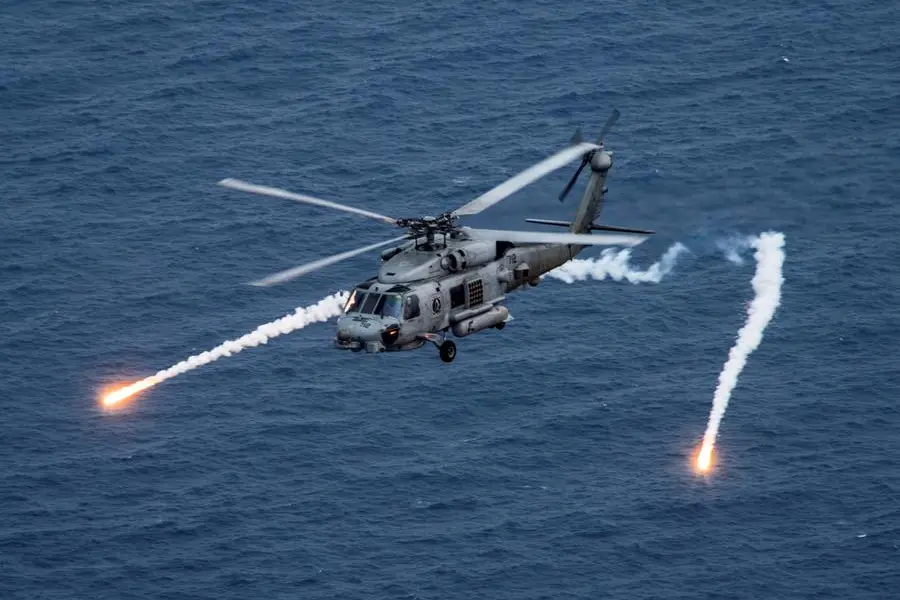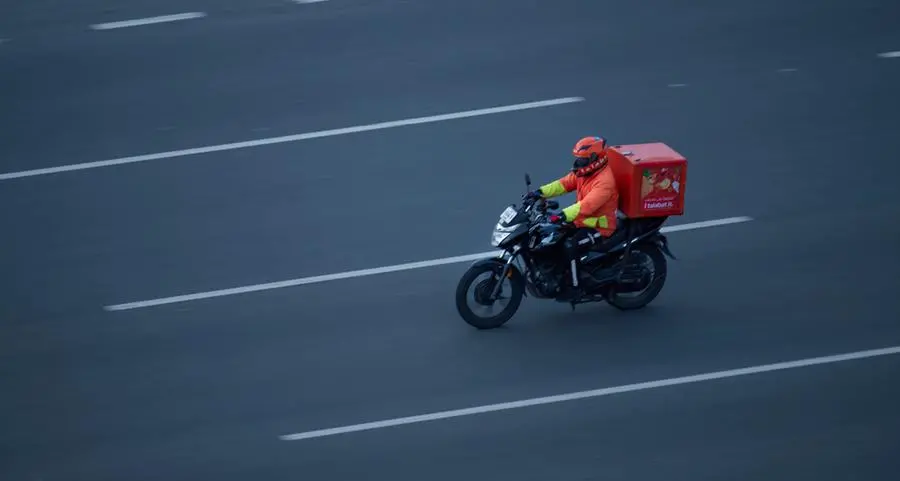PHOTO
(The opinions expressed here are those of the author, a columnist for Reuters)
LONDON - From the beaches of Kinmen island barely 10 km from the skyscrapers of the Chinese mainland port city of Xiamen, Taiwan military personnel – and a handful of U.S. special forces reported to be there – have watched Chinese patrol vessels encroach ever closer.
Last week, Taiwan's coastguard released footage of five Chinese coastguard and what appeared to be seven civilian vessels operating around Kinmen, the nearest within just 7.5 km of the Taiwan-held shoreline.
Analysts say that is the closest Chinese forces have been to Taiwan territory, although they are also increasingly encroaching on the main island of Taiwan itself, 145 km (90 miles) from the Chinese mainland across the Taiwan Strait.
Some Taiwan and China watchers believe those moves may be a precursor to a much larger show of force to coincide with the inauguration of Taiwan President Lai Ching-te on Monday.
Taiwan officials say Chinese vessels have encroached five times on waters around Kinmen since the start of May. Chinese military activity in the main strait is also sharply up.
Another possibility could be plans for a Chinese invasion of one or more of the small offshore islands controlled by Taiwan. Should that occur, it would likely be the most disruptive event since Russia’s invasion of Ukraine, at the very least prompting significant sanctions against China, interrupting shipping routes and international markets as well as risking a much wider war.
Those in power in Beijing have regarded Taiwan as a rogue province ever since the Chinese Nationalists of the rival Republic of China lost the Civil War to the Communists in 1949, setting up their headquarters on the island as a government in exile.
U.S. officials say Chinese President Xi Jinping has ordered his military to be ready to invade Taiwan by 2027, but they believe no final decision to launch such an assault has been made.
Xi has repeatedly said "reunification" with Taiwan is inevitable, whether peaceably or through force. Despite Beijing’s massive military buildup since the 1990s, most analysts believe China does not feel ready to launch a full-scale assault against the island. But it likely could overwhelm Taiwanese forces on the smaller islands, most likely starting with the Kinmen archipelago but potentially also including the Penghu islands in the middle of the Strait and Matsu chain nearer the mainland.
Such action would be a gamble. A successful takeover of the outlying islands might humiliate both the United States and current Taiwan government, making an eventual Chinese takeover of Taiwan itself look that much more unstoppable.
But it might also prompt a dramatic intensification of Taiwanese, U.S. and wider regional rearmament, complicating any eventual all-out invasion of the main island.
According to comments in March by Taiwan Defence Minister Chiu Kuo-cheng, small detachments of U.S. special forces have been training Taiwanese counterparts including on several islands including Kinmen and Penghu.
Last month, outgoing head of the U.S. Indo-Pacific Command, Admiral John Aquilino, denied that amounted to a permanent presence – but confirmed that the U.S. military was stepping up efforts to defend Taiwan, including making sure local forces had access to weaponry if parts or all of its territory were overrun by China.
LESSONS FROM THE PAST
Taiwan’s offshore islands have nearly sparked major conflict before. Through 1954-1955 and again in 1958, mainland Chinese forces under Mao Zedong shelled Kinmen repeatedly through what was widely seen as a precursor to a forced takeover of the islands, but were deterred from doing so by the United States under the Eisenhower administration.
The United States used its own landing craft to reinforce the islands with Nationalist troops from Taiwan itself, while declassified U.S. documents report around a dozen U.S. military and couple of CIA personnel were also on Kinmen – perhaps a similar posture to today.
Even more importantly, U.S. officials told their Chinese counterparts any landings might be met with the U.S. use of atomic bombs against nearby Chinese bases.
Members of the Eisenhower administration later described what became known as the “First and Second Taiwan Strait Crises” as almost as dangerous as more famous Cold War face-offs over West Berlin and Cuba. While Beijing did not have nuclear weapons at the time, the Soviet Union made it clear it would retaliate with nuclear force for any atomic bombing against China.
With Russian leader Vladimir Putin visiting Xi in Beijing just before the Taiwanese inauguration, the Moscow-Beijing relationship is now the closest it has been since that time.
Relations between Washington and Taipei, meanwhile, are their tightest since the 1970s. The U.S.-Taiwan Relations Act, signed into law at the start of 1979 after Washington switched to recognising the Communists in Beijing as the legitimate government of China, was “strategically ambiguous” as to whether the United States would fight to protect Taiwan.
During the “Third Taiwan Strait” crisis in 1996, the Clinton administration sent two aircraft carriers to blunt Chinese attempts to intimidate the island into cancelling or postponing its first democratic presidential vote that year. More recently, U.S. President Joe Biden has said several times that he would come to the aid and Taiwan militarily if it were attacked.
In 1996, U.S. and Taiwanese intelligence easily determined that Chinese posturing was intended to intimidate rather than a precursor to a serious attack, because they believed Beijing lacked the forces. Now, however, U.S. officials increasingly worry it might be hard to tell the difference between posturing and the run-up to a major Chinese assault until too late.
'UNPLANNED ENCOUNTERS'
An attack could come in several different ways. In the Himalayas, China and India have an agreement not to use firearms – although this did not stop a bloody mountaintop confrontation using sticks, rocks and axes in the summer of 2020, footage of which was later aired on Chinese TV.
It is not impossible Beijing’s forces might try to overrun Kinmen using similar types of force, then blaming Taiwan and the United States for escalation if they fire weapons in response.
What is not in doubt is that Chinese activity around Kinmen has been increasing steadily since the start of the year. In February, two Chinese fishermen died after being pursued by the Taiwan coastguard in a speedboat. The next month, Chinese authorities detained a Taiwanese officer and fishermen from Kinmen who they said had strayed too far into Chinese waters.
Since the end of March, Chinese officials have said they are monitoring Taiwan’s military on Kinmen, ready to respond immediately to any attempts at provocation.
On Monday, China's Global Times welcomed the increasing patrols, saying they had already nudged Taiwanese media outlets to cease using the term "prohibited or restricted waters" to apply to areas near Kinmen where Chinese patrols now routinely operate. It quoted another Beijing "insider" as saying that in the future, such increased "enforcement patrols" might be applied to other islands, "and even the entire Taiwan Strait".
This week, Reuters exclusively revealed that U.S. and Taiwanese forces had conducted previously unannounced naval drills last month in the Pacific. Comments by Taiwan officials suggested the focus of the exercises was training for “unplanned encounters” – in other words, confrontations between Taiwanese vessels and Chinese craft potentially in disputed waters.
Handling such incidents is complex – but they are increasingly the norm in the South China Sea, to the south of the Taiwan Strait. Filipino vessels resupplying a grounded landing craft on the disputed Second Thomas Shoal have been rammed by Chinese vessels and blasted with water cannon.
Despite tensions with Taiwan, few such incidents there have occurred – but it may only be a matter of time before they do.
* Peter Apps is a Reuters columnist writing on defence and security issues. He joined Reuters in 2003, reporting from southern Africa and Sri Lanka and on global defence issues. He is also the founder of a think-tank, the Project for Study of the 21st Century, and, since 2016, has been a Labour Party activist and British Army reservist.
(Editing by Nick Macfie)























